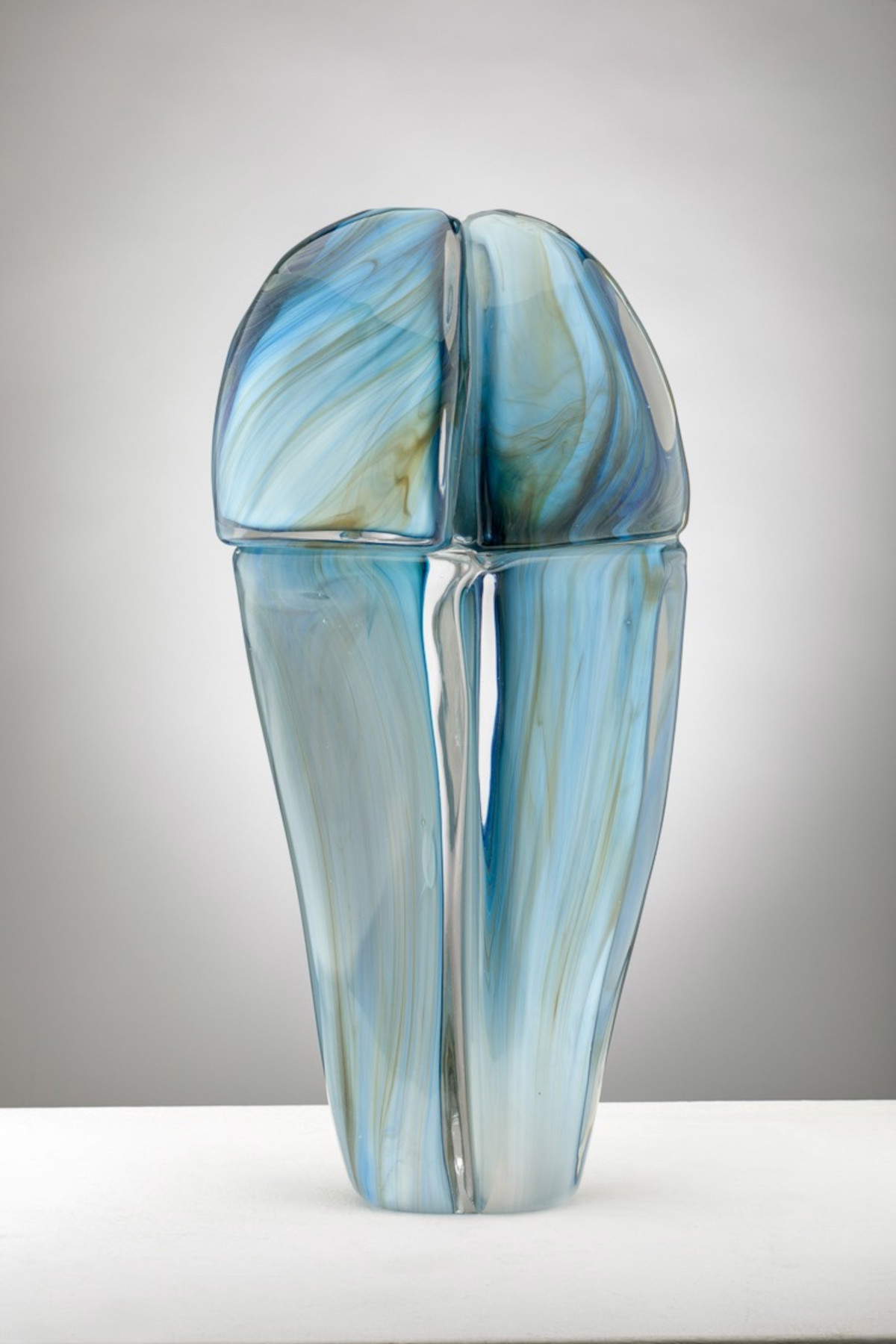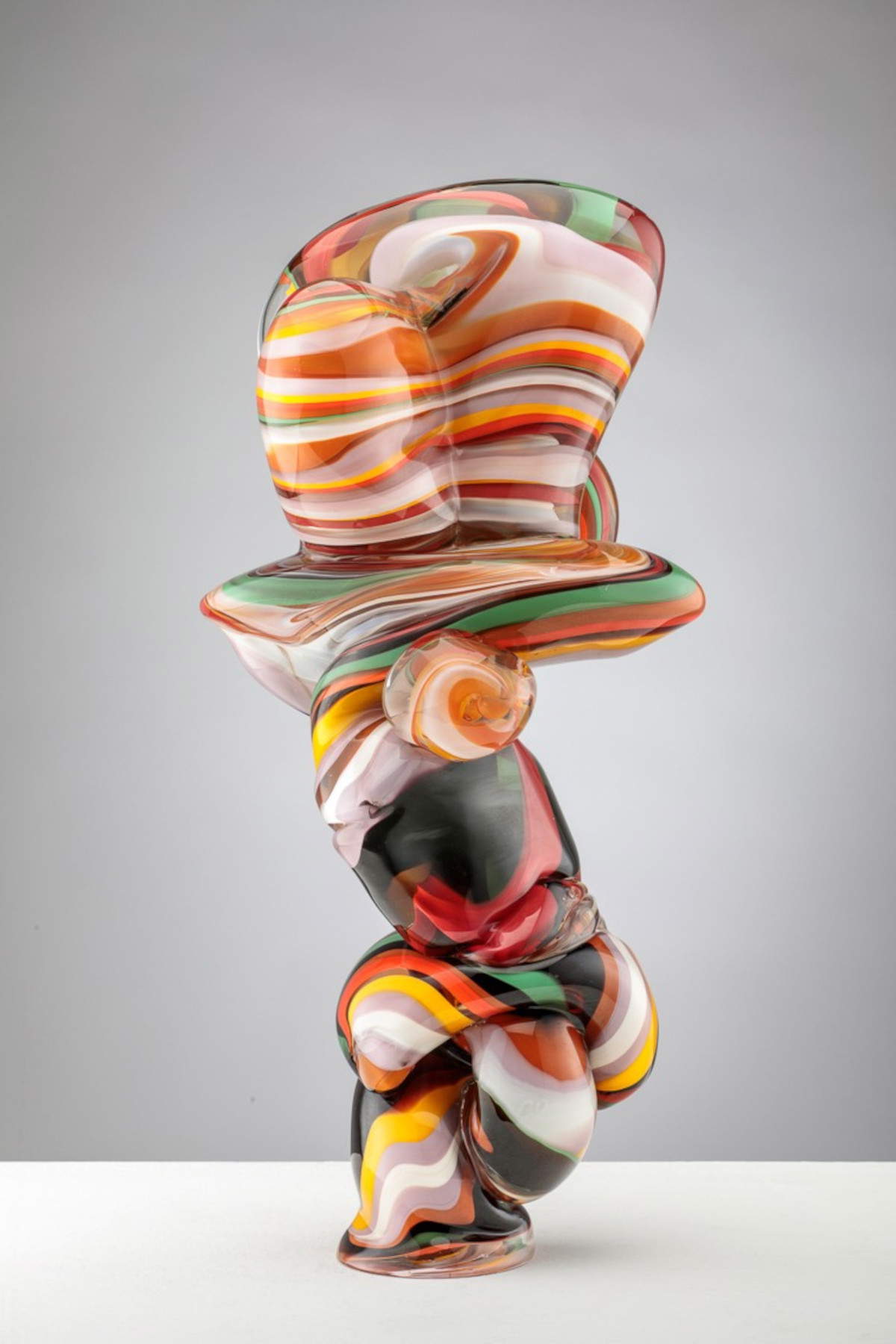Venice, in the historic Negozio Olivetti on display glass sculptures by Tony Cragg
Until September 1, 2024, the Negozio Olivetti in St. Mark’s Square in Venice is hosting the exhibition Tony Cragg. The Forms of Glass, curated by Cristina Beltrami and Jean Blanchaert and realized by FAI in collaboration with the Berengo Foundation. The historic store is in fact Good owned by Assicurazioni Generali, entrusted since 2011 to the care and management of FAI. In keeping with the spaces designed by Carlo Scarpa, a selection of glass sculptures from the personal collection of Tony Cragg (Liverpool, 1949) is on display, as well as a work created from scratch by the artist in close dialogue with the Scarpa spaces.
Among the leading artists on the international scene, Tony Cragg continues to reinvent the language of sculpture by developing complex relationships between material and form. Since the 1980s, the artist has expanded the range of materials he uses, always managing, perhaps also thanks to his scientific training, to penetrate the essence of each material and make the most of its every potential. This approach has led him to work with a wide variety of materials, including bronze, iron, ceramics, wood and glass.
The exhibition presents more than twenty glass sculptures that, together with a collection of drawings also belonging to the artist, recount his long experience with this material. They also illustrate Cragg’s creative process, who admitted that the drawing phase anticipates each of his works, becoming a daily activity. Having always been attracted to the work of Carlo Scarpa and the extraordinary ability of the spaces he designed to accommodate sculpture, and deeply affected by his visit to Negozio Olivetti, Tony Cragg has created an unprecedented sculpture with which he wants to pay homage to the great Venetian architect and his work.
All the sculptures at Negozio Olivetti were made in Murano, in blown and solid glass, with a few forays following the lost-wax technique, or blown entirely by hand. Cragg approached art glass in the 1990s in the Netherlands, but it was in Murano that he took up the most complex technical challenges, thanks to the millennia-old technical expertise of the masters, and the well-established collaboration with the Fondazione Berengo furnace.
Accompanying the exhibition is a catalog, published by Linea d’Acqua, and produced thanks to the support of the Berengo Foundation, which includes a critical essay by Jean Blanchaert, a lunge on the graphics section by Marta Spanevello, and finally a lengthy interview with the artist on the subject of glass by Cristina Beltrami. The exhibition will be accompanied by downloadable online multimedia material detailing the intricacies of the creative process of these sculptures.
Images: Tony Cragg. Photo by Francesco Allegretto. Courtesy Berengo Studio.




 |
| Venice, in the historic Negozio Olivetti on display glass sculptures by Tony Cragg |
Warning: the translation into English of the original Italian article was created using automatic tools. We undertake to review all articles, but we do not guarantee the total absence of inaccuracies in the translation due to the program. You can find the original by clicking on the ITA button. If you find any mistake,please contact us.




























